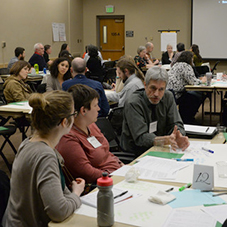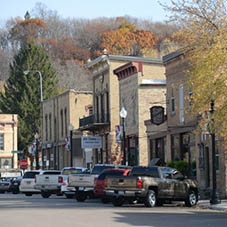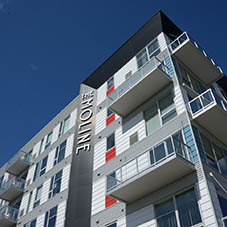Planning makes good sense. Thinking ahead produces better results than just charging ahead without a vision, goals, or plans.
Planning by local governments — including townships, cities and counties — enables them to grow and change in ways they can afford, and become the type of community they want to be.
The Metropolitan Council is the regional planning agency charged with planning and coordinating the growth and development of the seven-county metropolitan area. While local governments focus on planning for their communities, the Council is responsible for regional services that communities need. The two coordinate their efforts by taking part in a process of plan-making, negotiations, and final review of the local plans by the Met Council.
In this process, local communities and the Metropolitan Council are partners in planning for the future.
Communities set the vision for their future
At least once every 10 years, city councils, town boards, and county boards throughout the region take on a very important job — to update their local comprehensive plans. A local comprehensive plan represents a community’s vision of how it wants to grow and change — how it will develop its land, redevelop older areas, ensure adequate housing, provide roads and sewers, protect natural areas, and meet other community objectives.
State law sets stage for comprehensive planning
 State law requires the Met Council to create regional plans and policies to guide growth and manage regional systems for transportation, aviation, water resources, and regional parks. The law also requires local governments to update their comprehensive plans.
State law requires the Met Council to create regional plans and policies to guide growth and manage regional systems for transportation, aviation, water resources, and regional parks. The law also requires local governments to update their comprehensive plans.
Under the law, the Met Council reviews local comprehensive plans to ensure they are in accord with the overall framework provided by the regional plans. The review helps determine how a community’s planned actions relate to the interests of the whole region over the long term. It helps ensure that costly public infrastructure, like roads and sewers, are built in an economical and coordinated fashion, so that user fees and tax dollars are spent wisely.
Once the Council completes the review process for a comprehensive plan or amendment, the local government can implement it through zoning ordinances, capital budgets for public improvements, and other actions.
Planning begins with the Census
 The planning cycle begins with the release of data from the decennial U.S. Census. The Census provides a starting point for the Met Council to develop forecasts of regional and local changes in population and the number of households and jobs looking ahead 10, 20, and 30 years.
The planning cycle begins with the release of data from the decennial U.S. Census. The Census provides a starting point for the Met Council to develop forecasts of regional and local changes in population and the number of households and jobs looking ahead 10, 20, and 30 years.
We use this information to update our regional system plans to accommodate the forecasted changes. In February 2025, the Met Council adopted the overall development framework, Imagine 2050 which includes regional parks and trails, transportation, and water resources, as well as a policy plan for housing. The Met Council will issue System Statements to each of the region's 188 local jurisdictions in September 2025. These individualized documents show the counties and municipalities how they are affected by changes in the system plans.
Local governments were required to submit their updated comprehensive plans to the Met Council by Dec. 31, 2028, for review (unless they received an extension). Our staff assists communities as they develop, implement, and amend their plans.
Council offers technical assistance, planning grants
We provide resources and planning assistance to communities throughout the region to support coordinated, cost-effective growth. Sector representatives serve as liaisons between the Met Council and local governments. Each sector representative serves a specific group of communities. Sector representatives provide information, technical expertise, and resource referrals to local governments related to developing and implementing local comprehensive plans.